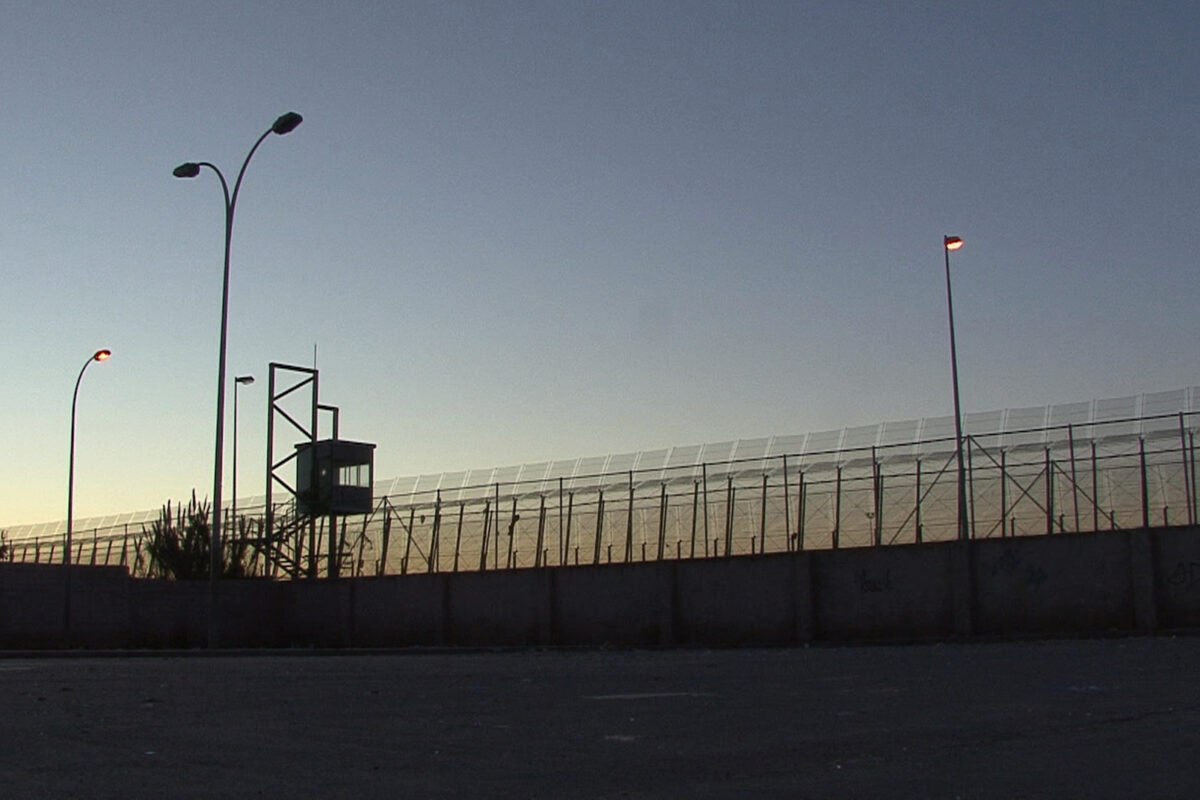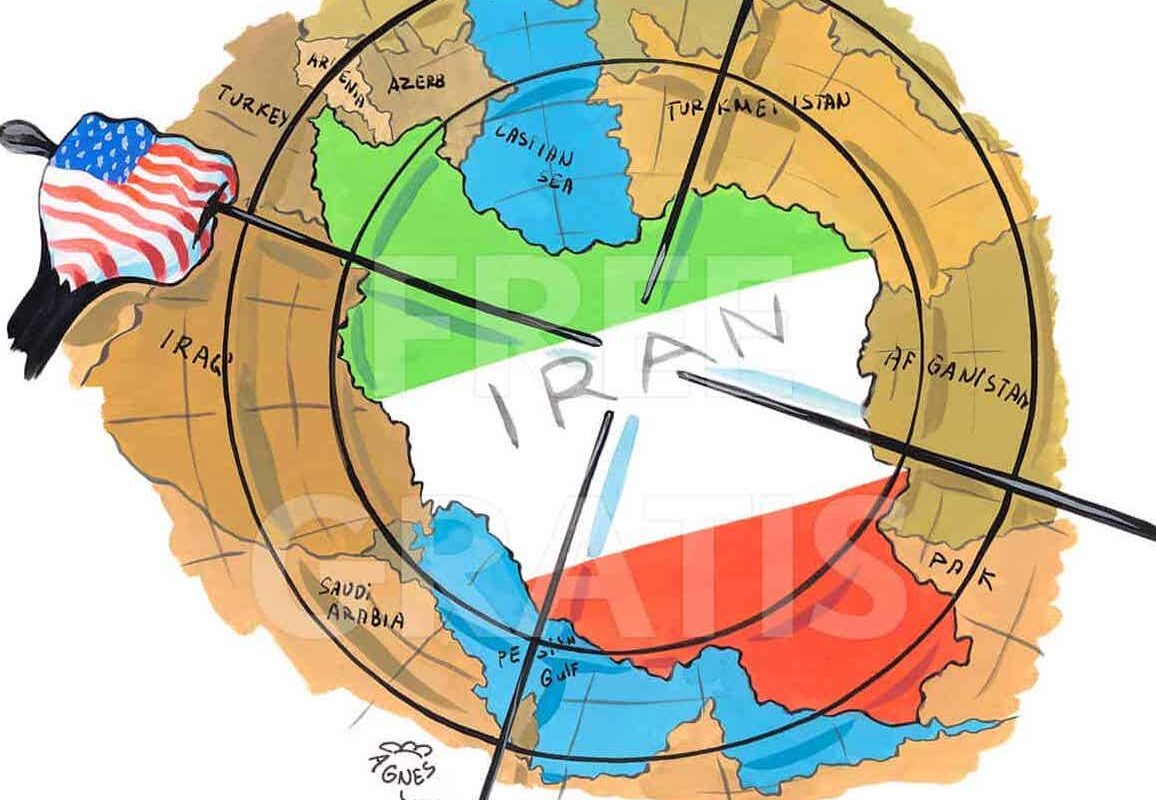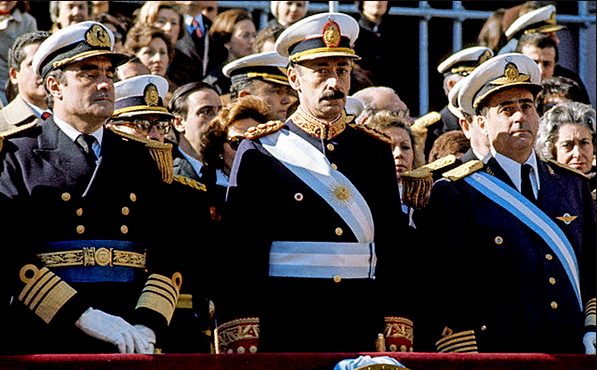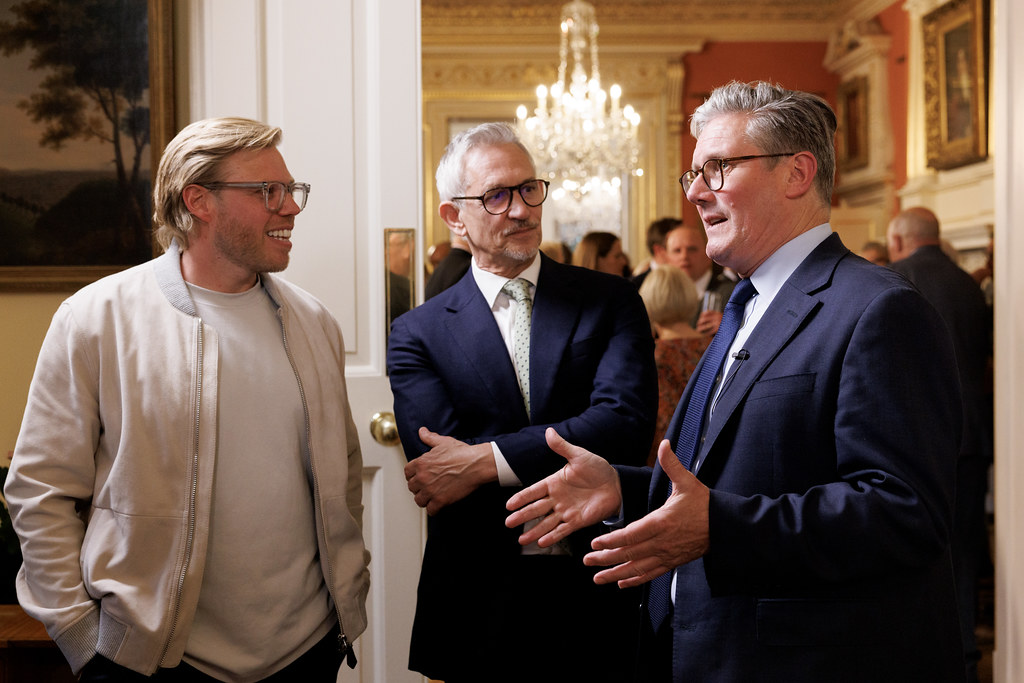It was the most recent in a long row of incidents, which receive little more attention than the weather report: people die on the border. Again and again this is followed by – nothing. Or, worse, the victims are mocked.
It happened on 24th June: hundreds of victims, of which at least 37 died. According to the Spanish interior ministry, they died as 1,700 attempted to cross the border fence in Melilla.
What does Fernando Grande-Marlaska, the Spanish interior minister from the social democratic PSOE say, three months later? There was a “timely and proportionate use of violence by the Spanish and Moroccan security forces”. He accused the migrants of “trying to enter illegally”, and of showing “extremely violent behaviour”.
Merciless Repression
But an unexpected party said: “470 people were sent back, without observing national and international legislation”. So said the Spanish ombudsman (Defensor del Pueblo) Ángel Gabilondo on 14th October, after reviewing documents of the Spanish ministry of the interior and the ministry for integration, social safety and migration.
Gabilondo is not entirely independent: he was an education minister of the PSOE and also an election candidate for the Madrid region. He was appointed to his post (a constitutional monitor of the Spanish authorities) after his crushing defeat at the local election.
He concluded nevertheless: “The constitutional court has ruled that before people are turned back from the border, every individual must be checked and compliance with international obligations for full judicial control is guaranteed.”
The ombudsman demanded that “the foreign ministry provide the embassies and consulates with material and human resources, so that people who require international protection can visit them and are able to apply for asylum without risking their life or having to enter the country using irregular methods.”
Junge Welt reported that the NGO Spanish Commission for Refugee Help (CEAR) had already described prior statements about the tragedy of 24th June, from the interior minister and prime minister Pedro Sánchez – as “fully unacceptable, when you remember that this joint action caused the death of dozens of people.”
CEAR, founded in 1979, wrote the government tries to particularly emphasize “violence” from the migrants, so that it does not have to speak about the “deep desperation suffered by people like those who tried to cross the fence in order to find protection”.
On 21st September, Enrique Santiago, head of the Spanish Communist Party and Unidas Podemos MP, stated in parliament that Spain must finally enable possible asylum applications, in particular for people from Africa. The justifications by the interior minister reminded him of the discourse of the extreme right.
CEAR also noted that “access to legal assistance and translators” as well as “identifying people who find themselves in a precarious situation and could be advised to apply for asylum” – could not take place. Since every person was “automatically sent back without having the possibility of identifying themself”.
Estrella Galán, general director of CEAR said: “people from countries South of the Sahara are thus systematically prevented from applying for asylum at the borders.” She asks: “what else can they do but jump over fences or risk their lives on the sea?”
We will see whether the tragedy of 24th June will be atoned. Until now, the Moroccan public prosecutor’s office has simply turned the tables and accused the migrants. This criminalisation again shows the dubious partnership between Morocco one one side, and Spain and the European Union on the other.
Resources flowing from Brussels to Morocco – around 500 million Euros until 2027 – are barely used to integrate asylum seekers, and much more for the ruthless repression of refugees. The relationship between Madrid and Rabat is such that, the weakest party – the migrants – suffer the most.
Strategic Places
Located on the African Mediterranean coast and surrounded by Moroccan territory, Ceuta and Melilla are the only “European” cities with a land border with Africa. Therefore they are a favourite destination for those fleeing war, dictatorship, famine and climate change, aiming for a better and safer life in Europe.
Since the 17th Century, the Exclave Ceuta has belonged to the kingdom of Spain. The city numbering 85,000 inhabitants, was conquered in the 15th Century by Portugal under John I, following a battle during the Reconquista. In 1668, it was taken over by Spain, after Portugal lost the so called “restoration war”.
Melilla has been owned by Spain since 1497, and numbering 86,500 people, it is a similar size to Ceuta. Neither city are in the Schengen area, posing a big problem for arriving refugees, who find themselves, often for years without a decision on their asylum status. Their legal limbo leaves them neither knowing if they will be deported, or if they will be allowed European entry.
Morocco, a Spanish-French protectorate between 1912 and 1956, considers both cities to be part of its territory. But the Spanish state claims the historic right over the cities for Spain. They are among the poorest places under the Spanish flag. Unemployment has been for decades around 25%. Apart from fishing and shipbuilding, others survive in Melilla through money transfer.
According to Spanish polls, the majority of the population wants to remains in Spain. Not surprising considering the composition of the population. Most people who live in Ceuta were born there, and thus are Spanish citizens. In 2017, this was around 65% of the inhabitants. The remaining 35% includes many Spaniards from other regions.
The second largest ethnic group are people from African countries, in particular from Morocco, which provides 9,500 inhabitants. Melilla’s population distribution is very similar. It remains unclear whether the Spanish government wants to invest part of the EU Reconstruction Fund in both cities because of the conflict with Morocco.
But Morocco uses every opportunity to pursue its claims. In a letter addressed to the UN human rights council, in which Rabat discusses the event on 24th June, the government said that Morocco has “no mutual land border with Spain.” As reported by the news agency Europa Press, you “cannot speak of borders, but merely of a passage” between Melilla and the rest of the country.
Moreover the Moroccan population of both cities has been traditionally disadvantaged. In the early, 1980s, in the course of the Transición after Franco’s death, the Muslim population fought for their rights as Spanish citizens. Until then, the only identification document available to even third generation Muslim inhabitants was a so-called “statistical card” (Tarjeta estadística). Buying a flat was prohibited, neither a general work permit nor health insurance was available. Every journey to the Iberian peninsula, required application for permission. This discrimination was only removed in 1987 after protests.
Both places, in which different cultures have lived together for decades, have a high strategic value for Spain. Sánchez expects that they will be secured by NATO, as he told the summit of the Western war alliance in June in Madrid. This message was unambiguously aimed at Rabat, although Sánchez said, he is eager to pursue a “good partnership” in keeping migrants from reaching Spain, however much it costs.
Shortly after his visit to the Moroccan king Mohammed VI on 7th April this year, the Spanish premier announced a new Western Sahara policy in a letter. This led to a resumption of official diplomatic relations between the two States. With an eye on the autonomy plan for Western Sahara suggested by Morocco, the social democrat spoke in the letter of the “most solid, realistic and credible basis” for a solution of the conflict between Rabat and the Sahrawi independence movement.” This caused great outrage in Spain.
Many including the Spanish Left, regarded these statements as a betrayal of the former Spanish colony Western Sahara. Sánchez’s plans also provoked considerable annoyance from one energy provider. Algeria, which supports the government of Western Sahara in the war against Morocco, suspended relations with Spain.
For decades, Morocco and Western Sahara were at war since Spain withdrew its colonial troops in 1975/76. Morocco, and initially also Mauritania, largely occupied this territory. This was interrupted by a UN-negotiated ceasefire, which offered the Sahrawis a false hope of an independence referendum.
The Spanish press examined events of 17th March 2021 and the following days, when Morocco was not guarding the border to Ceuta. Their judgement Spain was being punished for allowing Brahim Ghali, head of the independence movement Frente Polisario to enter the country, for COVID treatment in a Spanish hospital. Within 48 hours, around 12,000 people crossed the border, mainly young Moroccans looking for work, including quire a few minors.
According to El Periódico de España, Morocco was apparently pursuing a new migration strategy for Melilla. With the renewed opening of the iron ore mines in the mountains of Uixán/Iksane on the border with Melilla, the caves in which migrants had stayed in the past were cleared out.
The paper affirmed that in September, Moroccan armed forces had burned the tents of migrants. Reports from migrants and NGOs show that this is not a new approach, which includes regular baton attacks.
Fatalities again and again
Spain was shamefully, a European pioneer in the isolation of migrants. Already in the 1990s, Madrid had no other answer to refugees than militarisation. The root causes of this “problem” lie in the West.
In 1996, the Spanish army built an approximately 8 kilometre long wall around Ceuta. One year before, it put up barbed wire, to prevent migrants entering Spain and Europe. Three years later, the enclosure was extended. The Tageszeitung and El Pais reported then, the European Union subsidized the project with three million Euros.
Ten metres high and with three protective walls, the bulwark was equipped with NATO barbed wire. This is furnished with sharp blades, which led to many serious injuries. After persistent protests, the incumbent government dismantled the NATO barbed wire in 2019.
The fence around Melilla was erected by the government of José María Aznar in 1998. The social democratic government under Luis Rodríguez Zapatero augmented the barbed wire with sharp blades. While these were removed in 2003, they were re-fitted in 2017, before they disappeared in 2019. The twelve kilometre long double protective wall has cameras and motion detectors.
In the last quarter century, both facilities experienced “accidents” and “incidents”, euphemistically called. In September 2005, several hundred people in Ceuta tried to cross the fence. Five died, two from gunshots. More than one hundred were injured. At the time, El Mundo reported that an autopsy on Spanish soil revealed that the ammunition used was not officially used by the Spanish police.
In October of the same year, hundreds of people tried to cross the fence – this time in Melilla. Once more, they were shot at, and six died, said El País. The authorities spoke of self-defence, against the migrants carrying sticks and throwing stones at police.
According to victim statements, following this the Moroccan police packed 700 people into buses, and left them in the desert South of the city of Oujda – without food or water. Around 70 people were deported to Morocco, which was previously Spanish territory.
El País wrote: “The first migrants, who after crossing the fence in Melilla, had to return to Morocco, were 70 people from the Sahel state Mali.. afflicted by a plague of locusts in 2004.” An illegal deportation into a third country. One year later, both Amnesty International and Doctors of the World sharply criticized the Moroccan government for this “deportation into the desert”. In 2010 three more people died trying to cross the fence in Melilla.
On 6th February 2014, the man made “tragedy” reached a new peak: at least 15 migrants died and dozens were injured on the El Tarajal beach in Ceuta. They had been attacked in the water by the paramilitary Guardia Civil with batons, tear gas and rubber bullets. The Guardia Civil denied this.
Around 400 people attempted to swim to Spanish territory. Twenty-three refugees were returned to Morocco without any examination. The human rights organisation European Center for Constitutional and Human Rights (ECCHR) supports the victims of this pushback. “The behaviour of the Guardia civil was unlawful according to both Spanish and European law”, wrote ECCHR.
Nevertheless, investigations were stopped at least three times, and no survivor was called as a witness. Moreover the investigation magistrate ordered “a hearing for the Guardia civil servants about deaths by gross negligence and failure to render assistance.” This hearing still has not taken place.
The construction of the border fortifications in Ceuta and Melilla has substantially increased the number of refugees drowning in the Straits of Gibraltar, and not stopped migration. Until 2017, the Spanish interior ministry has spent 258 million Euros to militarise the border. A further 742 million Euros flowed to Spain from Frontex, the European agency for protecting borders and coasts. Large corporations like Indra and Ferrovial have also been paid to build bulwarks.
But the work of the Guardia Civil has “not been made any easier” by the fence from Ceuta and Melilla, as a worker for the NGO Fundación por Causa wrote for El Salto. Officials were in a quandary: the lack of legal paths for migrants on the one hand, and the desperation of those trying to cross the fence, led to violent situations. Many were haunted by depression.
Even the former foreign minister José Manuel García-Margallo conceded that ultimately, they are witnesses and actors at one of the most heavily guarded and unjust borders of the world.
Anonymous Graves
The border between Morocco and the European Union is the deadliest border for refugees on the entire planet. The fences were only the first measure, control of the waters followed. This means that those desperately fleeing misery dare the even more dangerous route across the Atlantic.
It is estimated that in every year since 2014, around 4,00 people have drowned during transit. In 2021, according to the NGO Caminando Fronteras, it was 4,404 people. The numbers are so exact because the NGO has set up a telephone for people in distress. Among the dead from 21 different countries, were 205 children last year.
The sheer horror tales place again and again. In May 2021, a boat was on the high seas for up to 22 days, when found 500 kilometres from the island El Hierro. On board were 17 dead, starved and dehydrated. Two children and one woman survived.
The media portal El Diaria reported the funeral. The dead were buried in the cemetery San Francisco de Igueste on Tenerife. On the burial niches were written three-digit numbers, no names. The burial was attended by two graveyard workers and a young man from Senegal who a few months earlier had arrived in a similar boat. The dead were not buried for a month because the local mortuary was overflowing. It is unclear whether family members know their fate. A project by the Red Cross attempts to find the names of the dead since last year.
Caminando Fronteras reports that after the events of 24th June in Melilla, the dead were buried in mass graves on the Moroccan side. Helena Maleno Garzón, the chairwoman of the NGO, who has worked for a long time in Morocco and been harassed by the Spanish and Moroccan authorities, has spent years denouncing the inhumane isolationist policy. Both Spanish officials and Frontex workers handed over a dossier about her to Moroccan judiciary. The helper is criminalized just as much as the refugees.
Until June this year, a verifiable number of 978 people have died trying to reach Spanish territory. It is estimated that around five die every day, including those who try to reach the Canary Islands. In 2017, the NGO Fondación Pro Causa calculated deaths on the flight to Spain via Morocco up until the late 1990s. For a good 20 years since the Transición, this came to less than 200 people.
Most migrants who now die, and whose corpses are found are not identified, their families are not informed, there is no burial ceremony. They are buried anonymously, in the cemeteries of Ceuta and Melilla, or in Andalusia and the Canaries, which contains the largest cemeteries for the Mediterranean and the Atlantic. They are given the reference “immigrant from Morocco” or “died on the run.” The corpses of more than 80 per cent of the dead are not found.
Clearly they count for little. This death toll does not result in a change of course – quite the reverse. The EU continues to adorn itself with its Nobel Peace Prize, transfer more money to its doorman Morocco and militarise the border even more strongly.
Meanwhile, those who are threatened with persecution and poverty do not receive the slightest chance of an asylum procedure. The doors remain shut to all those whose mistake is that they were born in the wrong part of the world.
This article first appeared in German in the junge Welt. Translation: Phil Butland. Reproduced with permission




